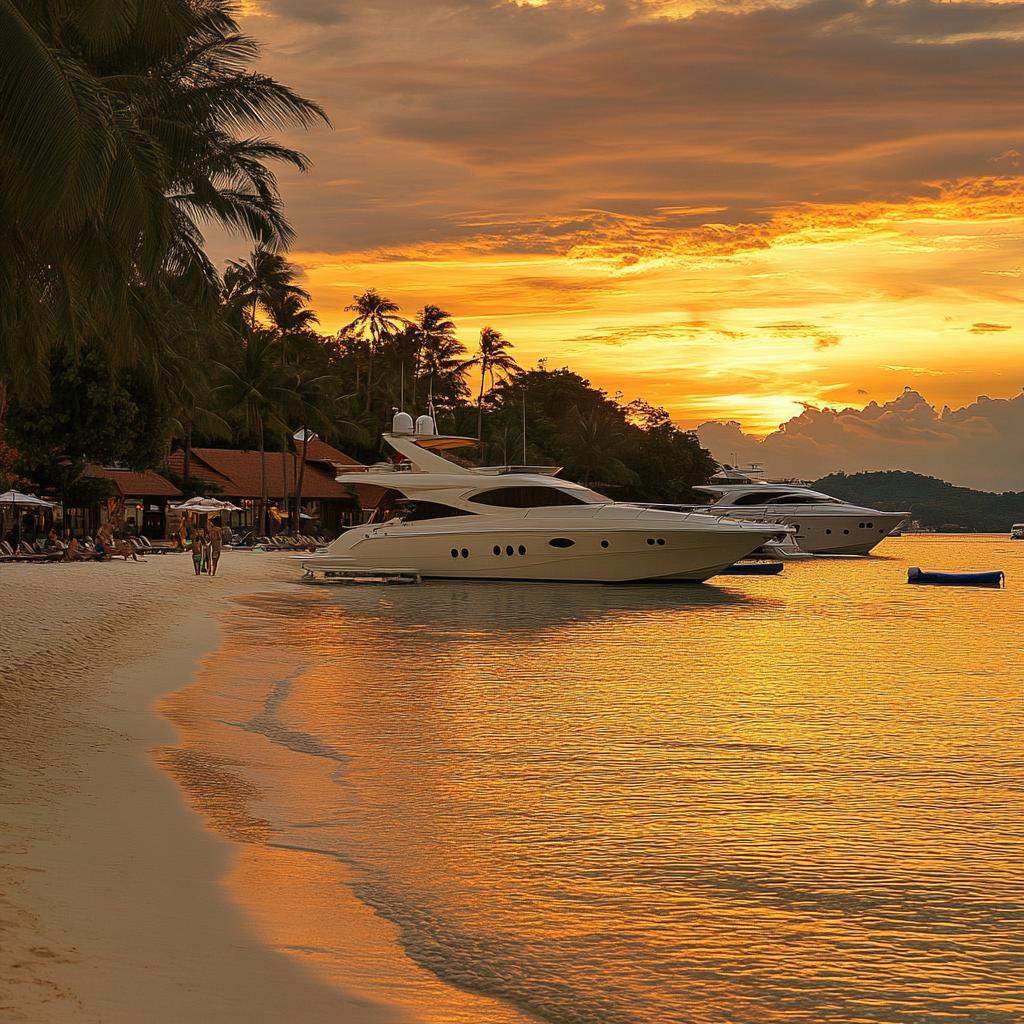Rathawat Kuvijitrsuwan, the astute Senior Vice-President of Advisory and Asset Management for Asia at JLL Hotels & Hospitality Group, shared some enticing insights into this tourism boom. Delving into the figures, the average daily rate (ADR) for luxury hotels in this idyllic island has exceeded a staggering 10,000 baht per night recently. And it’s no surprise! After the filming locales went public, prices witnessed a notable 40% jump, with newly minted hotels leading the charge. Mega yachts and private jets, you have some serious company!
By contrast, the more seasoned hotels, seasoned yet bursting with charm and history, have settled into the still-commendable sweet spot of 8,000 to 9,000 baht per night. But don’t let their age fool you—they are offering experiences that are every bit as enchanting.
Rathawat couldn’t help but draw from the pages of recent history, referring to the 2013 tourism tsunami that swept through Chiang Mai after “Lost in Thailand” hit the screens in late 2012. It was a phenomenon driven by droves of eager Chinese tourists. However, Koh Samui isn’t ready to be drowned by an overwhelming wave. The island, with its serene allure, is capped by the cozy constraints of flight accessibility and the exclusive nod of Bangkok Airways at its single airport. It’s not overcrowding, but rather a curated charm.
Looking towards a crystal ball of the future, Rathawat voices cautious optimism when it comes to Koh Samui competing with the soaring heights achieved by Phuket and bustling Bangkok. The past few years have been nothing short of stellar for these destinations, with a pantheon of investors vying to get their golden fingers on prime properties. In Bangkok, luxury hotel ADRs have skyrocketed by an impressive 49%, with price tags frequently peaking at 15,000 baht. Phuket, taking things to even greater heights, has experienced ADR growth up the valve-popping 120% since 2019.
Hoteliers in Koh Samui are honing their craft and capitalizing on this wave of visibility. What about the broader hotel scene? Middle-range establishments are enjoying sunshine on their faces, although still in the shade of the luxury cohort. However, budget hotels are left pining for an uptick, working hard to tempt back their core clientele—tour groups that buoyed them before.
Fast forward to 2025, and Rathawat foresees a more tempered growth trajectory. The demand boom has fortified hotels and tantalized investors, with last year’s transactions reaching dizzying heights of 22.3 billion baht across Thailand. This is a fervor comparable to when malls introduce a coveted limited-edition item. JLL predicts 2025 will bring transactions to 13 billion baht; not one to scoff at, certainly!
Yet, Rathawat throws his arms up about labor shortages, proving that even in paradise, hiccups exist. The hunt for staff, particularly front office roles that serve as the first friendly smile new guests see, has become a Sisyphean task for operators.
Overall, the incoming tides have brought renewed attention and energy to an island that seems to naturally host the world’s elite. So, whether indulging in rejuvenating spa treatments or savoring local delicacies, Koh Samui, thanks to its TV debut, is rolling out a golden carpet that beckons global visitors to its sun-drenched shores. Let “The White Lotus” be your map; Koh Samui awaits to etch indelible memories under its palm-fringed skies.


















These price hikes are insane! How do they expect regular tourists to afford these luxury stays? It’s going to ruin the island’s charm.
The charm was ruined the moment ‘The White Lotus’ brought it mainstream. It’s all about the money now, not the experience.
I agree. The locals must be feeling pushed out by wealthy tourists.
Not so fast! This could be a chance for locals to prosper and improve infrastructure with the tourism cash influx.
This is a typical pattern—prices skyrocket as soon as a place gains fame. It happens everywhere.
If you can’t afford it, go somewhere else. Luxury destinations are meant for those who can pay the price.
That’s a terrible mindset! Travel should be inclusive, not just for the elite.
Can Bangkok Airways handle the influx of tourists? One airport seems limiting for an island this popular.
The airport is intentionally small to keep the island exclusive. It’s the charm of being ‘hard to get!’
Remember Chiang Mai? The hype faded after a while. This too shall pass with Koh Samui.
That’s true, but Koh Samui is more exotic. ‘The White Lotus’ gave it a permanent stamp.
Perhaps, but nothing beats nature over Hollywood drama. Time will tell.
I can’t wait to see the outcome of these investments in 2025. Will we see a more balanced tourism landscape?
If leveraged well, investment can breathe new life into the island’s economy.
Let’s hope it doesn’t backfire with unsustainable development.
Why compare it to Bangkok and Phuket? Each has its uniqueness. Koh Samui doesn’t need to follow their footsteps.
True, but market competition naturally calls for comparisons. It remains a business in the end.
With luxury properties becoming the norm, will budget travelers even consider this destination?
Backpackers will still find their corners. It’s the spirit of adventure, not luxury, that guides them.
Labour shortages are a real issue. It’s hard to maintain service quality without sufficient staff.
Exactly! The island needs more initiatives to attract labor, or it could tarnish the visitor experience.
Finally, Koh Samui is getting the recognition it deserves! High prices mean only the best kind of crowd.
As a local, I hope this doesn’t mean future generations will miss out on the island’s natural beauty due to overdevelopment.
The White Lotus magic is real, but I doubt the same allure will be there when the cameras leave.
Being featured on a show is a double-edged sword. Let’s hope tourists respect the local culture.
Luxury doesn’t equal happiness. Everyone should be able to enjoy Koh Samui without burning a hole in their pocket.
Phuket, Bangkok, and now Koh Samui—destination fame isn’t everything. Sometimes local gems need protecting from the spotlight.